Cs100- final exam review PDF

| Title | Cs100- final exam review |
|---|---|
| Course | Introduction to Media History |
| Institution | Wilfrid Laurier University |
| Pages | 17 |
| File Size | 249.4 KB |
| File Type | |
| Total Downloads | 66 |
| Total Views | 141 |
Summary
Final Review ...
Description
EXAM REVIEW CS100 EXAM REVIEW Nye ● Invention ○ Ideas or concepts for new products and processes ○ A completely new technology ○ Very rare ■ Eg. electric light ● Innovation ○ Reduction of an idea to the first use or sale ○ New ways to make a previous technology useful ● Diffusion ○ Widespread use in the market ○ Projection ○ New uses ○ The work of designers, marketers, or innovative users adopting the technology into their lives ■ Eg. light bulb, invention, LED light belt, innovation ● Nearly every invention has troubles; finding a market ● Technology is often used later on in life as something else ○ The best designs do not always win ○ Puts emphasis on the gap and the use ● Hardware is much less profitable than software services ● “quality”/usefulness and whether something spreads widely is not highly correlated ○ Not a big connection between these things ■ Eg. the hushaphone ● Pricing is something to keep in mind as well ● The phonograph predicted to be used as: ○ Speaking dolls or toys ○ Clocks could call out the hour ○ Advertisement on the street ○ Delivering lectures ○ Explaining how to get to next place ○ Aid to biz men to dictate letter to their secretaries ○ ‘As a musical instrument’ ● Prediction ○ Things often counter in ways how we expect them to happen ○ It is easier to predict what we are capable of than it is to predict what we will need socially ○ Things are developed for one use, but wind up never being used for that specific thing, you cannot predict the social, the cultural, etc.
EXAM REVIEW ■ How it will fit into people’s lives ■ Edison has blindness to his own invention ■ He had no idea what he was creating ○ Things you have to keep in mind when thinking about the future ■ ⅓ of scholars predictions had become true 50 years later ■ Did the prediction take into account the social, cultural and political trends? ■ International relations? ● Eventual use: ○ Investors → corporations ○ Public reaction
Postman ● The printing press created a new symbolic world that made a new conception of adulthood which meant children were excluded from the definition of adulthood which meant they needed a new word to inhabit ● It took 200 years for childhood to become a feature ○ Came from the idea that each individual is important in himself, that a human mind and life in some fundamental sense transected community ● Adulthood was earned ● A child was simply a not yet grown adult ○ Old drawn pictures of children were given adult features with a weird baby head ● Understanding childhood is through literacy and the printing press ● Child was seen as ‘helpless’ and needed things done for them, teenager was figuring it out, angsty ● For centuries a child was not an adult ● We have an idea of childhood as precious ○ Often seen through the public eye ● Suggests childhood is its own stage of life, emerges as a result of the printing press ● Believed technology changed institutional structures as well as ideas, beliefs and even habits of thought ● Argued that communication technologies such as television resulted in the disappearance of childhood and erased boundaries of knowledge between children and adults slowly becoming indistinguishable ○ Eg. sesame street didn’t encourage children to love school but to love television ● Social conditions pre-press ○ Alphabetic writing system ○ Manuscript tradition
EXAM REVIEW
●
● ● ●
●
●
■ Value placed on existent text ○ Paper manufacturing ○ Literate scribes ○ “Revival of classical culture” ○ “Growth of commerce” ○ “Age of exploration” Explosion of print ○ Blackmail ○ Gossip ○ Narcissism ○ Personal essay Reading as an antisocial act Printing and the birth of childhood Knowledge explosion ○ People began to learn about new things ■ Eg. pediatrics Printing → the book ○ Pagination ○ Indexing ○ Annotation ○ Cross referencing ○ Section headings ○ Title pages ○ Running heads ■ Eg. the typographic form The book ○ All though in one place on particular topic ○ Accessible ○ Intelligible ○ Internally consistent ○ Integrating ideas ○ Compiling subject in a book reinvented understanding of whole
John Thompson — Origins of Modern News ● Print development transformed patterns of communication in early modern Europe: gave rise to periodical publications which reported events and conveyed information of political and commercial character ● 4 types of pre-print communication networks ○ Network controlled by Catholic church
EXAM REVIEW ■ Enabled papacy in Rome to maintain contact with clergy and political elites dispersed throughout the loosely knit realm of Christendom ○ Network established by political authorities of states and principalities ■ Operated both within territories of particular states (facilitating administration and pacification) and between states, which maintained some form of diplomatic communication with one another ○ Network within business community and between major trading centres ■ Linked to expansion of commercial activity: resulted when trade and manufacturing increased ○ Network of merchants, peddlers, and travelling entertainers ■ Individuals gathered in places/taverns and interacted with merchants and travellers ■ People picked up news about events which took place in distant locales ● 4 networks affected by 2 key development ○ Regular postal services ■ Led to postal network and common carrier services ○ Application of printing to production and dissemination of news ■ Provided individuals with a valuable source of information about current and distance events Tom Standage: “The Victorian Internet” ● Pony express ○ 1850 California became a state ○ April 1860s to October 1861 ○ Pony station stop every 10 miles; pony could only run 10 miles as fast as it can ○ Rider had to be small and thin, under 120 pounds ○ Mail delivery system involving horse and rider relays ○ need/demand for information from west coast ○ Ended with the invention of the telegraph ○ Was an organizational development, not technological ○ Get information in 10-16 days ■ Q: What is a social development that led to the adoption of the pony express? A: Discovery of gold in California ● Postal Service ○ First postal service: Louis XI in France 1464 ■ Made his own network ■ Only officials and important people could use it ○ 15th to 17th centuries: partial postal services proliferate ■ Postal service that is scattered ↳ Individual post offices ■ First time where was not only wealthy getting mail
EXAM REVIEW ○ 17th to 18th centuries: individual services link up for “common carrier service” ■ Partial postal service → partial coverage; King says service is only in particular areas ■ Early postal service was slow, not too useful, people in a mass scale couldn’t get information easily ● Building underwater cable networks ○ 1st underwater telegraph ■ Rubber coated wire encapsulated inside lead pipe; water used as the conductor; message was sent across NY, rubber deteriorated quickly in water and would not be able to last across seabed of English Channel to France ○ 2nd underwater telegraph ■ Gutta-percha to replace rubber; expensive; ideal for insulating cables. Wire meant to spool out of boat’s stern and steam across channel with telegraph instruments would be connected at each end; wire was too thin and floated behind the boat instead of sinking; clamped weights around wire at regular intervals to make it sink; first message sent from England to France using this method came out as gibberish; cable worked; messages were garbled because of surrounding waters changing the cable’s electrical properties (staccato pulses of electricity were smoothed out); high speed automatic machines transmitted so fast that pulses overlapped and became indistinct ○ 3rd underwater telegraph ■ Gutta-percha covered wires twisted together and wrapped in tarcovered hemp; encased in a cladding of tar-covered iron chords; tougher than first cable and weighed 30x more; hard to control; way of first public underwater telegraph abilities; first message from England to France in 1852 ○ Problem of laying telegraph network across water was solved ■ Cable needed proper insulation to be strong so it didn’t break, be heavy enough to sink, and messages couldn’t be sent too quickly James Carey: “Time, Space, and the Telegraph” ● Telegraph and Standardized Time ○ Telegraph marked the decisive separation of transportation and communication ■ You could now communicate without having a physical object needed to be transported ○ Telegraph allowed for symbols to move independently across land and move faster in time ○ Was a producer good then a consumer good
EXAM REVIEW First used for long distance chess Commercial significance slowly realized First profound impact on the conduct of commerce government and military It events out the markets in space Puts everyone in the same place for purpose of trade, makes geography irrelevant ○ Eliminates opportunities for arbitrage by realizing the classical assumption for realizing the classical assumption of perfect information ○ Changed the use of time contracts ○ Transmitting knowledge of price and crop conditions it drew markets and prices together ○ Removed markets from the particular context in which they were ○ Historically located and concentrated on them forces emanating from any place to any time ● Telegraph and Commodities Markets/Speculation/Arbitrage ○ “The telegraph started to change the use of time contracts, as well as arbitrage. By widely transmitting knowledge of prices and crop conditions, it drew markets and prices together.” (pg.128) ○ Commodities Market: physical or virtual marketplace for buying, selling, and trading raw or primary products ■ First effects were the reorganization of commodity markets ■ The price of commodity would diverge from city to city so that the price would be radically different in different cities ■ The prices of commodities were largely determined by the local conditions of supply and demand ○ Arbitrage: (the principle method of trading) buying cheap and selling by moving goods around ■ Eg. if a good was cheap in Ottawa but expensive in Toronto, you buy in Ottawa and resell in Toronto, as long as the price difference is greater than the cost of transporting between two cities ■ If arbitrage is widely practiced the prices should settle to an equilibrium ■ This didn’t happen before the telegraph because people did not know about the prices in different cities ○ The movement of commodities out of space and into time had consequences (pg. 129) ■ Price information had to be relayed by messengers → destroyed temporal identity of markets, monopoly of knowledge was created ■ Futures trading required the de-contextualization of markets ↳ Markets were made relatively unresponsive to local conditions of supply and demand ↳ Removed markets from the context in which they were historically located ○ ○ ○ ○ ○
EXAM REVIEW ■ Commodity was sundered from its representation ↳ Development of futures trading depended on the ability to trade or circulate negotiable instruments of independently of the actual physical movement of good ↳ Traded independently of any movement of the actual good ■ Products not bought or sold by inspection of the actual product or a sample thereof ↳ Sold through a grading system ↳ Impersonalized standards Sousa & Edison— attitudes towards the phonograph at its birth and after its adoption ● John Philip Sousa — 1996 ○ “I foresee a marketed deterioration in American music and musical taste, an interpretation in the musical development of the country, and a host of other injuries to music in its artistic manifestations, by virtue — or rather by vice — of the multiplication of the various music-reproducing machines…” ○ Phonograph Reproduction and Soul ■ “And now, in this twentieth century, come these talking and playing machines, and offer again to reduce the expression of music to a mathematical system of megaphones, wheels, cogs, disks, cylinders, and all manner of revolving things, which are as like real art as the marble statue of Eve is like her beautiful, living, breathing daughters.” ○ Musical Ability Lost ■ “There are more pianos, violins, guitars, mandolins, and banjos among the working classes of America than in all the rest of the world, and the presence of these instruments in the homes has given employment to enormous numbers of teachers who have patiently taught the children and inoculated a love for music throughout the various communities.” ○ More Doom ■ “Then what of the national throat? Will it not weaken? What of the national chest? Will it not shrink? ■ When a mother can turn on the phonograph with the same case that she applies to the electric light, will she croon her baby to slumber with sweet lullabies, or will the infant be put to sleep by machinery? ■ Children are naturally imitative, and if, in their infancy, they hear only phonographs, will they not sing, if they sing at all, in imitation and finally become simply human phonographs — without soul or expression?” ○ Loss? ■ Illustrator in music classroom
EXAM REVIEW ■ Dance orchestra ■ People singing at home, in public bars ■ Hurt all industries he's supportive of ● Edison ■ Lots of different ways you can use it, seem pretty great ■ Phonograph and music ↳ “The phonograph will undoubtedly be liberally devoted to music” ↳ “Thus a friend may in a morning call sing us a song which shall delight an evening company.” ↳ “As a musical teacher it will be used to enable one to master a new air, the child to form its first songs, or to sing him to sleep.”
Keller: “Photojournalism” ● Photography’s Integration into Journalism ○ Early Photojournalism ■ 1820s — technology of camera photography ■ 1890s — photojournalism; it finally became possible to reproduce photograph in large newspaper editions ■ Key: the ‘disconnect’ between technological possibility and the structures that support it ↳ Economic infrastructures ↳ Organizational infrastructure ○ What Made Photojournalism Viable ■ Use of reproduction technology: halftone illustration reproduction ↳ More outlets ■ Development of hand-held (small, fast) cameras, leaving tripods behind ↳ More subjects, including trivial ■ News agency development ↳ More coverage ↳ “A point is reached where no important event can take place without extensive photographic coverage.” ○ Styles of Photojournalism ■ What should a news photograph look like? ■ Collaboration between photographers and editors ○ Feelings about Photojournalism Rise ■ Harpers Weekly: “We can’t see the ideas for the illustration. Our world is simply flooded with them.” ■ Woodsworth: “Now prose and verse sunk into disrepute / Must laquey
EXAM REVIEW a dumb art that best can suit / The taste of this once intellectual land/ A backward movement surely have we here / From manhood back to childhood / Avaunt this vile about of pictured page!” Sontag: “On Photography” ● Photography’s Integration into Family Life ○ To photograph is to appropriate the thing behind being photographed ■ Taken the moment and preserved it ■ “There is an aggression implicit in every use of the camera” ■ Documenting family, growth of your children, etc. ■ Camera goes with family life ○ Social Context ■ Nuclear family as a dominant social unit ■ Multi-generations under one roof model in decline ■ Documenting from one to another ● Truth, Experience, and Photography ○ Reality vs Interpretation ■ Famous lady gets “tricked” into looking a little crazy on camera to help argument in magazine ■ Getting closer to the lens and tweaking the focus can make your face look different ■ To collect photos is to collect the world ○ Experience as a Photographer ■ Life’s purpose: assemblage of photo moments> ■ Distraction from being disoriented? ■ Fills awkward moments? ○ Writing vs Photo ■ “While painting or prose description can never be other than a narrowly selective interpretation, a photograph can be treated as a narrowly selective transparency” ■ Photos tell a story similar to a novel or piece of writing but lacks the ability of literacy to understand how someone is feeling in the photo or the mood of it Stephen Kern: “Wireless World” ● Wireless and the Titanic ○ Wireless telegrapher on the Titanic ○ Hear morse code and know exactly what is being written without going back and forth to check ○ Allowed for easier contact with other boats ○ The distress calls could go out to many people, other ships on land
EXAM REVIEW ○ People could be saves if stranded (Titanic allowed for this idea to prosper) ○ Easy to transfer news to boats ○ 11:40 they hit the iceberg and at 12:15 the captain ordered the wireless operator to make a distress call; sent over a dozen ships ○ One ship was 19 miles away but did not receive the call ○ Telegraphs made the rescues possible ● Simultaneity of Experience ○ Right now; the present ○ Possible to be in two places at once in current time ○ You can respond at once without time to reply ○ “The telegraph...combined together almost at one moment...the opinions of the whole intelligent world with respect to everything that is passing at that time upon the face of the globe.” (208) ○ “It focused the attention of the inhabitants of an entire city on a single experience, regulated their lives, according to the program schedules, and invaded their privacy with an emergency single that enabled the station to ring every subscriber when special news broke” ■ It’s possible to be physically present in two places at once
Claude Fisher: Telephone ● Early Telephone Networks ○ 1876 — invented by Alexander Graham Bell ■ Was useless when invented because two phones were needed in order for it to be useful ○ 1877 — reorganized the Bell Telephone company and seriously marketed the device ■ They decided to lease the instruments and license local providers, attracted franchise around the country who use their own capital to rent telephones, string wires and in return they got rental fees ○ 1878 — first telephone exchanges ○ Building a Bell Monopoly 1880-1893 ■ Monopoly builder ■ Licenses ■ Flat rate vs message ○ Uses of Telephone ■ Transmitting sermons ■ Broadcasting news ■ Wake up calls ■ Degree conferred by phone ■ Dispatching boats
EXAM REVIEW ○ First subscribers? ■ Doctors ■ Druggists ■ Businessmen ○ Residential? ■ Needed lower rates Susan Douglas: Early Radio ● Crystal Sets ○ Composed of tuning coil, a crystal detector, and a pair of earphones ○ Use of a crystal eliminated need for battery or other electric source ○ Early radio sets without electricity, just needed headphones to get the sound ○ Used by most DXers ○ Discovery of crystal detector opened up radio ○ Experimental technology ● Early Radio Listening Habits ○ Early 1920s ■ Variable frequencies ■ Open broadcasters ■ Domestic location unfixed—not clear, where is it going to be? Kitchen? Garage?, etc. ■ Method of financial support unfixed — money from advertising ■ Assemble own set ○ Broadcasters ■ Department stores ■ Newspapers ■ Manufacturers of radio equipment ■ colleges/universities ■ Labour unions/socialists ■ Ham operators ○ Late 1920s ■ Radio broadcasting became more centralized ■ Outline the different ways people use the radio ■ First time with standardized mass entertainment ○ Content throughout the 1920s ■ 1920-1924 — DX Listening ↳ Trying to tune in as many times faraway stations as possible ↳ Used listening to imagine America as a nation more harmonious than it was yet simultaneously reveling in it and embracing its differences ■ 1925 — music listening
EXAM REVIEW ↳ Happened along with DXing ↳ Became more popular when speakers improved ■ 1929 — story listening ↳ Scheduled time each week ↳ Characters would enact comedic or dramatic performances ■ Late 1920s: Network vs Local Broadcasts ↳ “The rapid explosion of exploratory listening would not have occurred without that fraternity called the amateur operators and later known as ham operators” ■ Also included “fake news: ● Emergence of Chain Broadcasting ○ Rapid exploratory listening would not have happened without ham operators ○ They constituted the first radio audience ■ Paved the way for radio broadcasting ○ Discovery of crystal detector opened up radio ○ Amateurs dominated wireless airwaves ○ Amateurs would send false or obscene messages ...
Similar Free PDFs

Cs100- final exam review
- 17 Pages

CS100 Final Exam Notes
- 19 Pages

CS100 Syllabus
- 12 Pages

Chem Final Exam Review
- 12 Pages

Final Exam - Review notes
- 92 Pages

Bio Final Exam Review
- 2 Pages

Final EXAM Review booklet
- 5 Pages
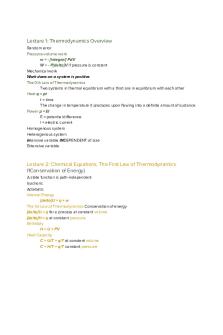
CHEM303 final exam review
- 4 Pages

Psychology Final Exam - Review
- 13 Pages
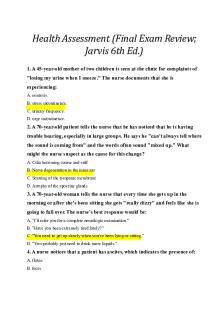
Jarvis Final Exam Review
- 12 Pages
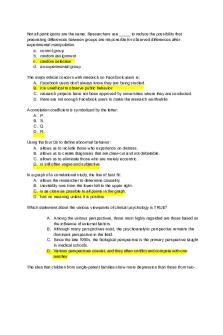
Final exam review
- 96 Pages
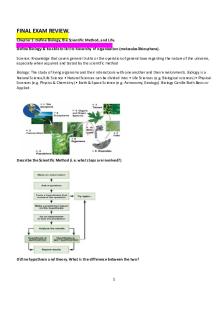
Final Exam Review
- 48 Pages
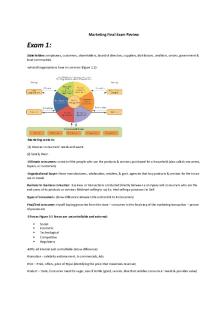
Marketing Final Exam Review
- 15 Pages
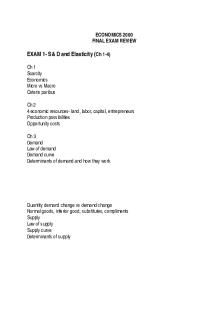
Final exam review
- 8 Pages
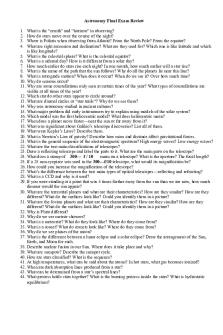
Astronomy Final Exam Review
- 2 Pages
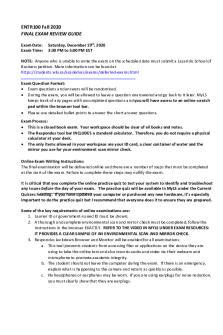
Final Exam Review Guide
- 4 Pages
Popular Institutions
- Tinajero National High School - Annex
- Politeknik Caltex Riau
- Yokohama City University
- SGT University
- University of Al-Qadisiyah
- Divine Word College of Vigan
- Techniek College Rotterdam
- Universidade de Santiago
- Universiti Teknologi MARA Cawangan Johor Kampus Pasir Gudang
- Poltekkes Kemenkes Yogyakarta
- Baguio City National High School
- Colegio san marcos
- preparatoria uno
- Centro de Bachillerato Tecnológico Industrial y de Servicios No. 107
- Dalian Maritime University
- Quang Trung Secondary School
- Colegio Tecnológico en Informática
- Corporación Regional de Educación Superior
- Grupo CEDVA
- Dar Al Uloom University
- Centro de Estudios Preuniversitarios de la Universidad Nacional de Ingeniería
- 上智大学
- Aakash International School, Nuna Majara
- San Felipe Neri Catholic School
- Kang Chiao International School - New Taipei City
- Misamis Occidental National High School
- Institución Educativa Escuela Normal Juan Ladrilleros
- Kolehiyo ng Pantukan
- Batanes State College
- Instituto Continental
- Sekolah Menengah Kejuruan Kesehatan Kaltara (Tarakan)
- Colegio de La Inmaculada Concepcion - Cebu